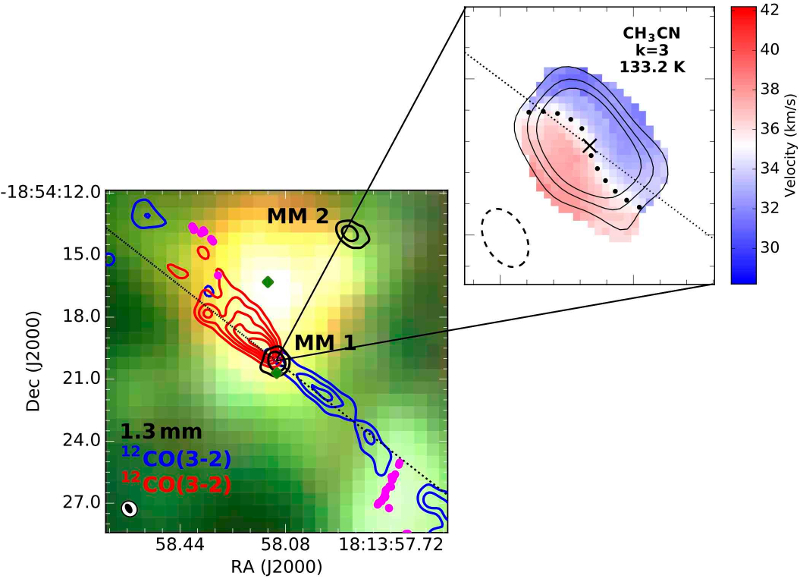
|
EPoS |
|
EPoS Contribution
|
|
Unveiling Massive Star Formation with Multi-Wavelength Observations
John Ilee IoA Cambridge, Cambridge, UK | |
|
The formation of massive stars is poorly understood. In this talk, I will discuss our
work on using both NIR spectroscopy and mm/cm interferometry to unveil the immediate
circumstellar environment of massive young stars.
We show that that the CO first overtone bandhead emission feature at 2.3 microns traces small scale (sub to a few au) gaseous discs in Keplerian rotation around these objects, lending support to the idea that massive star formation is a scaled-up version of low mass star formation. However, this feature is not ubiquitous among all massive YSOs, and our recent modelling suggests only certain mass accretion rates result in detectable CO emission from these objects. To investigate how these small scale discs are fed from larger mass reservoirs, longer wavelength observations are required. I will discuss our work using the SMA and VLA to characterise the massive YSO G11.92-0.61 MM1. Analysis of the kinematics of compact complex species such as CH3CN indicate clear infall and rotation signatures consistent with a Keplerian disc on scales of 1000's of au. Analysis of our VLA data suggests excess emission toward the centre of MM1 consistent with the presence of a hyper-compact HII region. Informed via our observations, we have modelled the gravitational stability of the disc around MM1, and found it may be susceptible to fragmentation. Finally, I will discuss our recently delivered ALMA Cycle 4 observations of G11.92, which have allowed us to characterise scales of hundreds of au around the central protostar and search for evidence of disc fragmentation. | |
 | |
| Caption: SMA line and continuum observations of G11.91-0.61 MM1 showing the bipolar molecular outflow, and the gas velocity from the CH3CN K=3 transition, consistent with infall and a rotating Keplerian disc. | |
| Collaborators: C. Cyganowski, St Andrews, UK R. Oudmaijer, Leeds, UK C. Brogan, NRAO, USA T. Hunter, NRAO, USA |
Key publication
Suggested Session: High-mass star/star cluster formation |